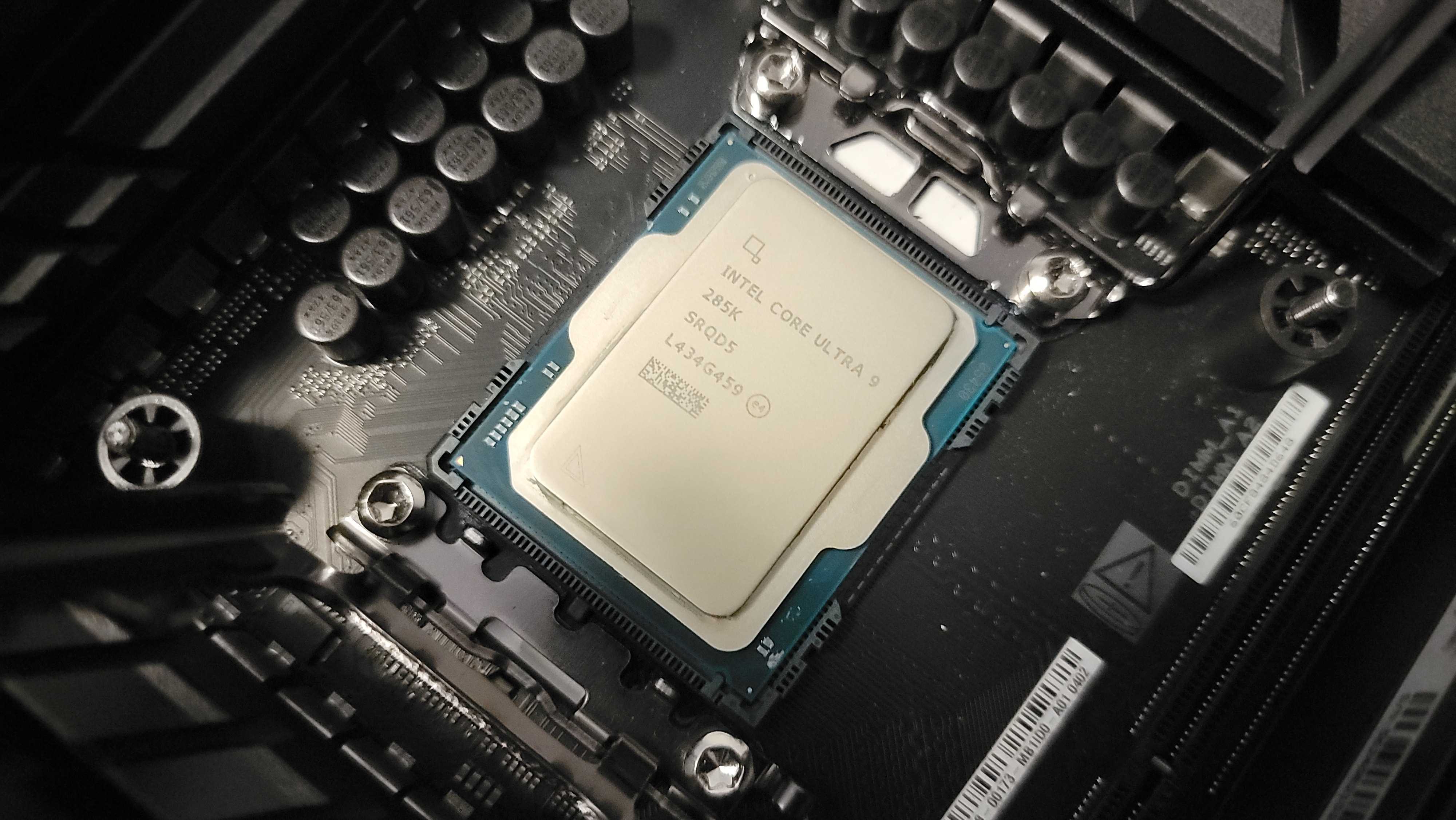Why you can trust Tom's Hardware
Intel’s $589 Core Ultra 9 285K brings substantial gains in productivity workloads and drastically reduces power consumption; however, the new Arrow Lake chips struggle to keep up with their prior generation counterparts in gaming, making the chips more of a lateral move for performance enthusiasts.
Below, we have the geometric mean of our gaming test suite at 1080p and a cumulative measure of performance in single- and multi-threaded applications. These are cumulative measurements, so outliers in specific titles can impact the values. The Ryzen X3D chips use 3D V-Cache tech, which doesn’t accelerate all titles equally and comes with performance penalties in productivity applications. Be sure to check our individual game and productivity benchmarks in the preceding sections to make an informed decision based on your intended workloads.
We conducted our gaming tests with an Nvidia RTX 4090, so performance deltas will shrink with lesser cards and higher resolution and fidelity settings.
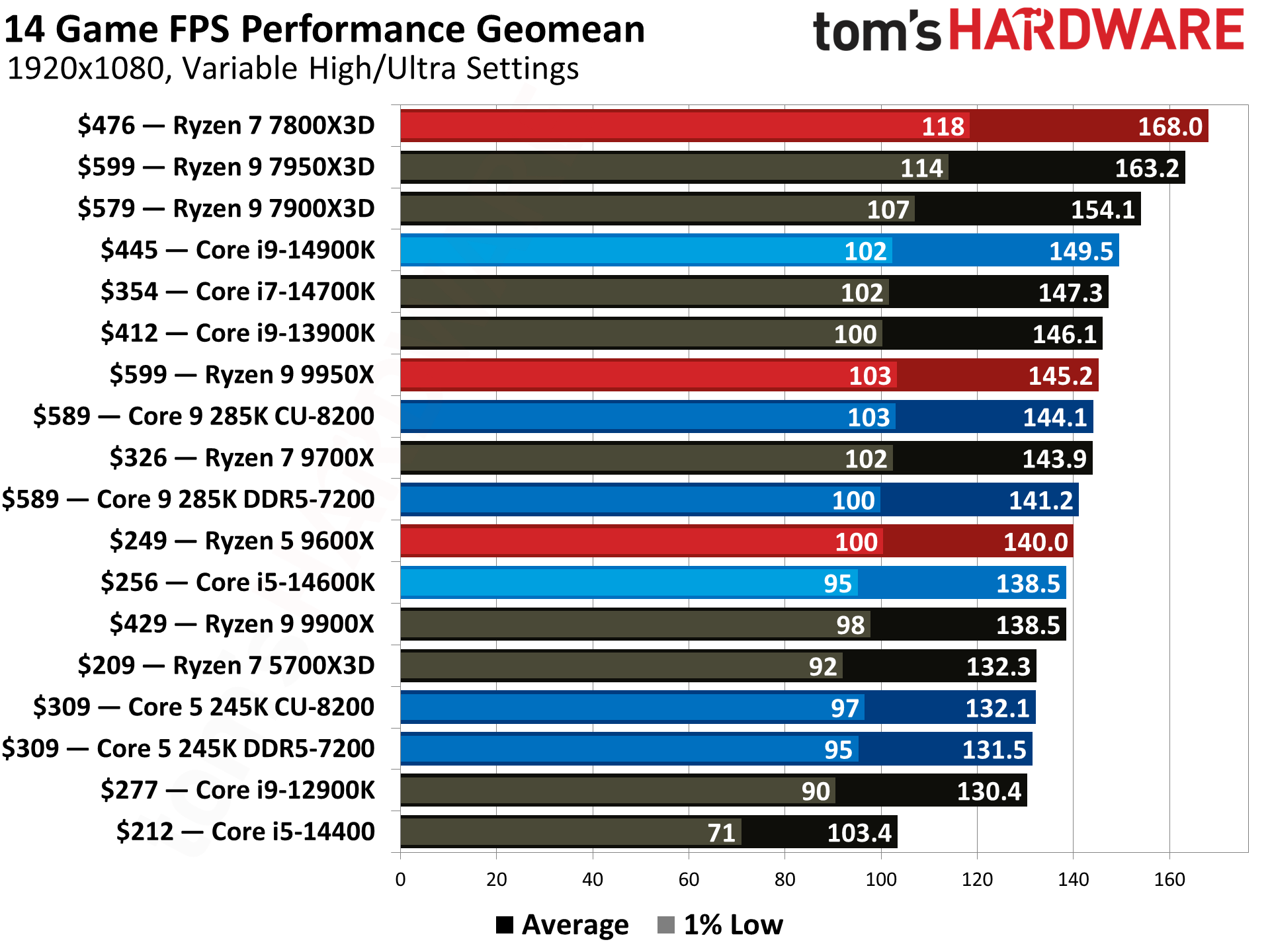
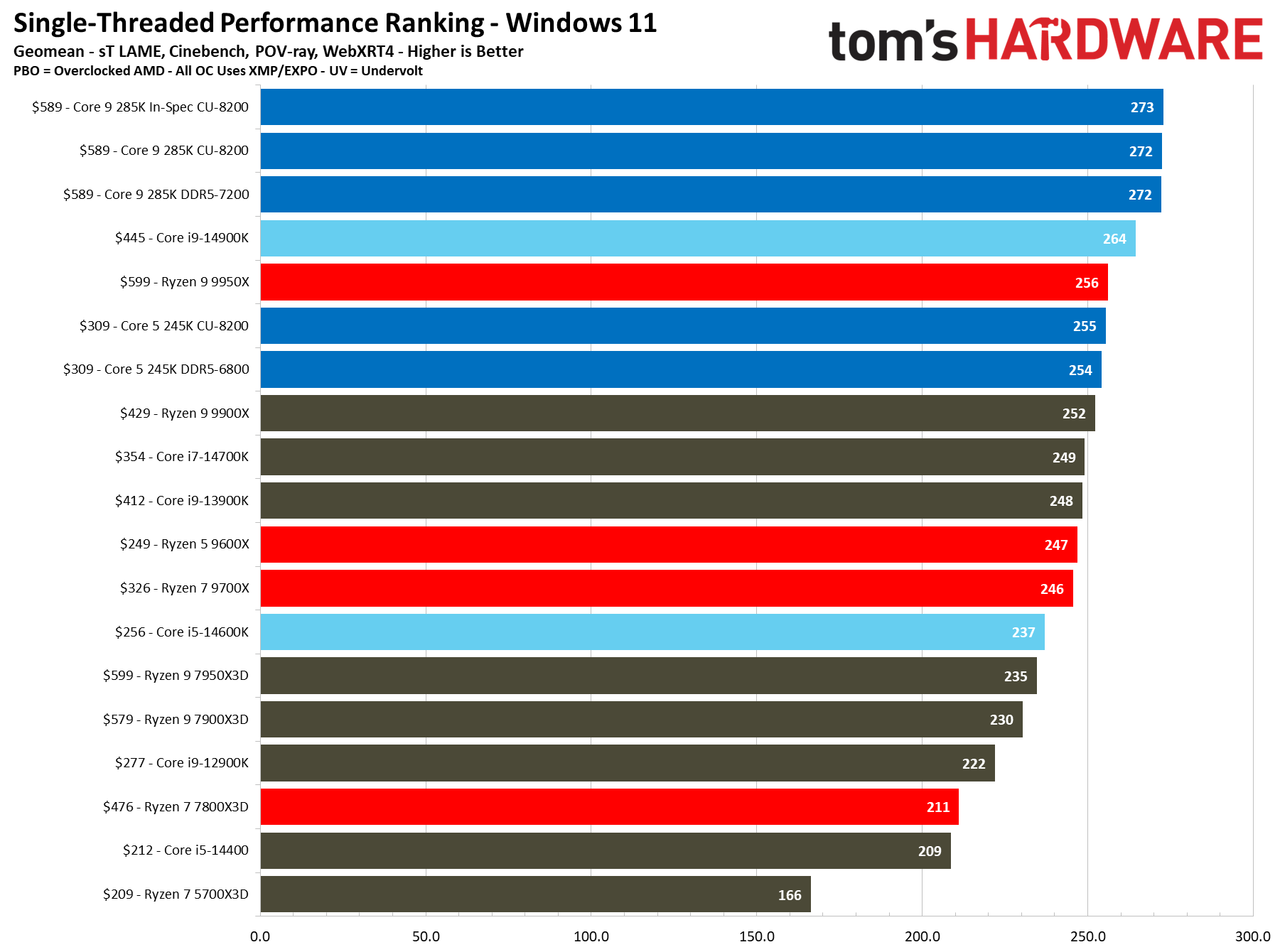
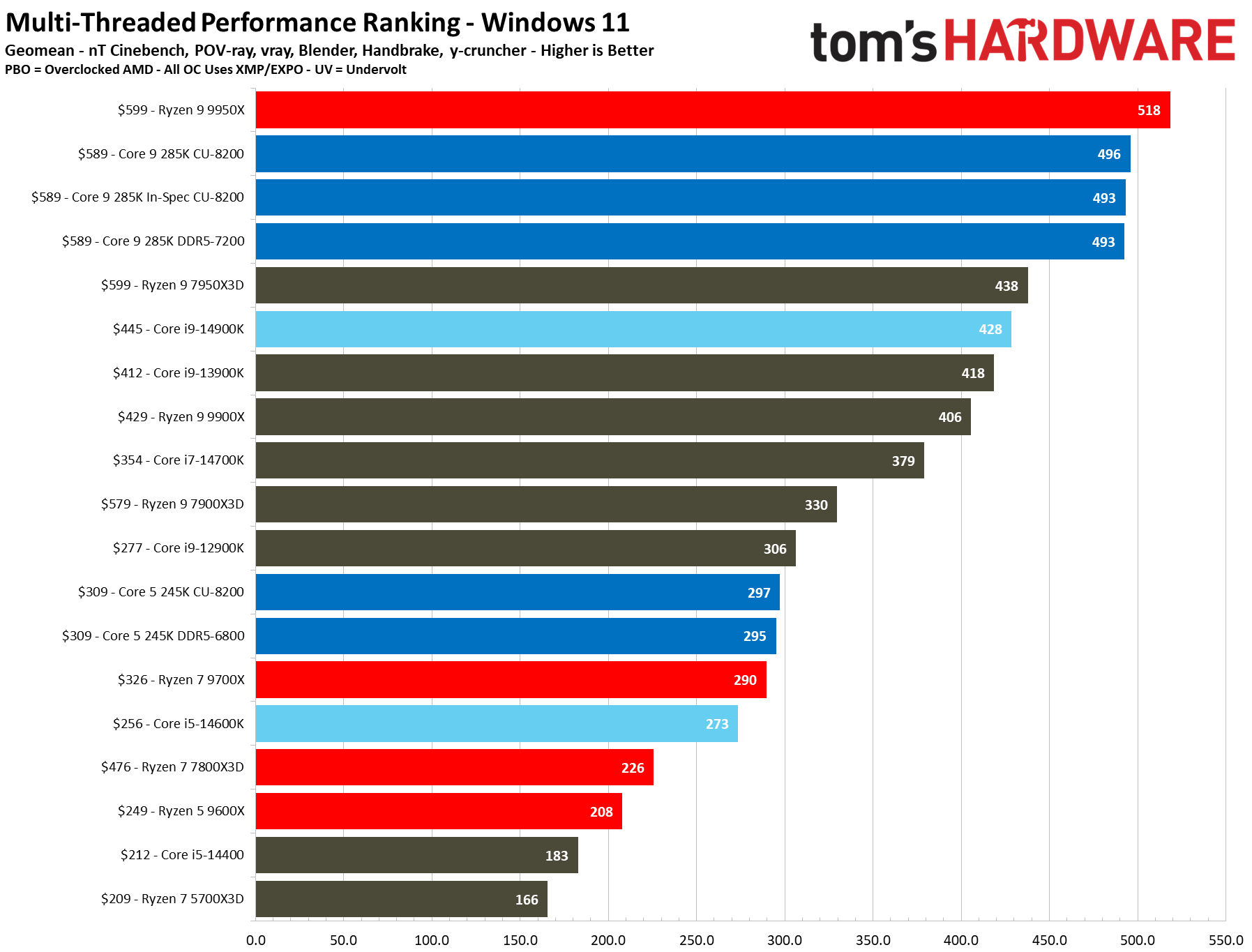
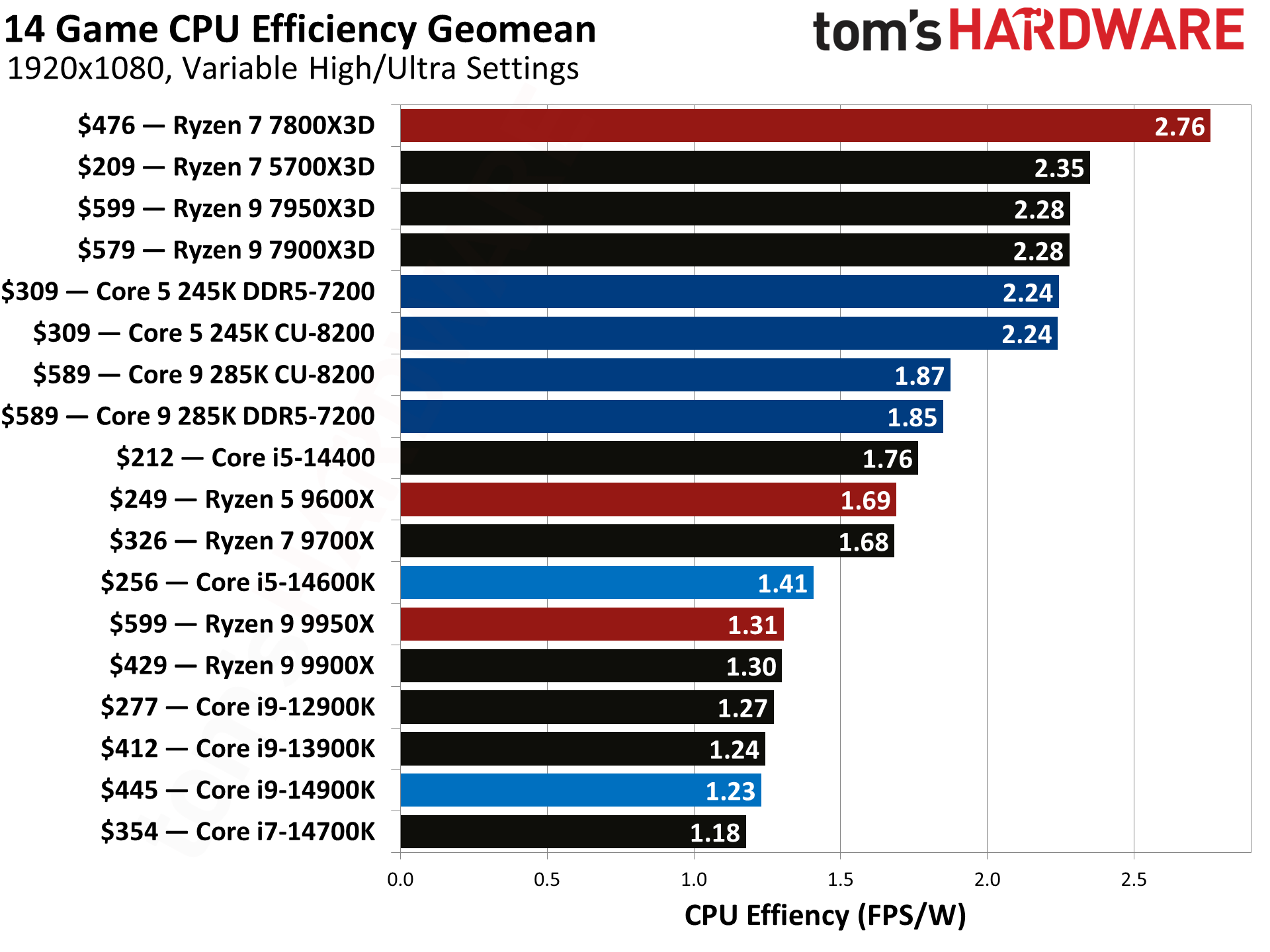
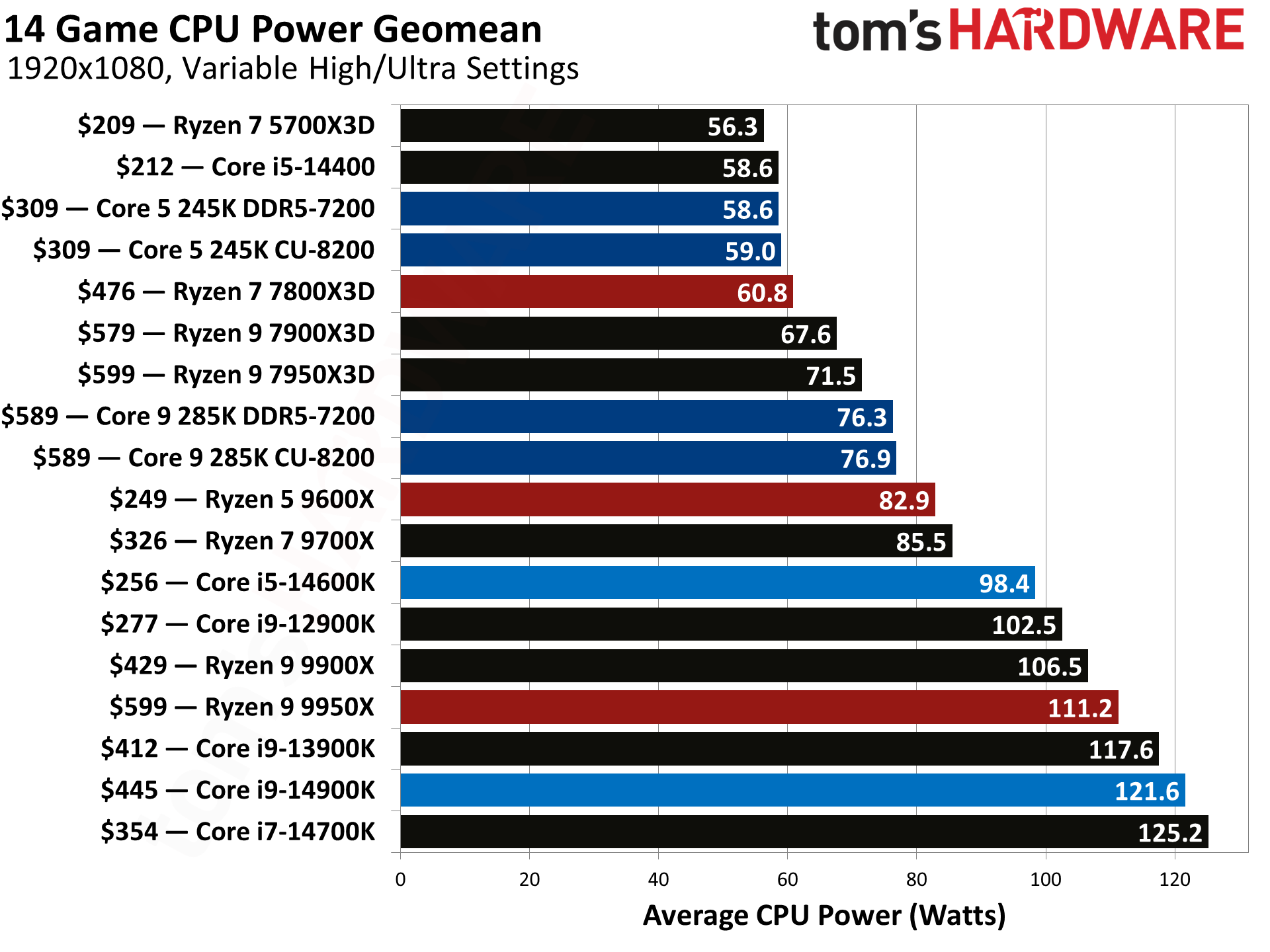
Intel’s Arrow Lake platform still feels raw; we encountered a few odd characteristics during our testing, so it is possible that we could see at least slightly better performance in the future.
With Arrow Lake, Intel is transitioning to a chiplet-based design for desktop PCs for the first time, a process that AMD completed years ago. AMD notably encountered an almost unending number of odd performance issues in different types of software, particularly with games, when it first rolled out its then-new Zen architecture, and we expect that Intel could be facing some of those same challenges now. AMD worked with the software ecosystem rather quickly to optimize games and other software, but some of those efforts took years to come to fruition. However, given the scale of Intel’s user base, any needed adjustments might come along faster.
However, we don’t advise anyone to buy a processor based on what might happen in the future. Based on what we see now, it’s hard to recommend the Core Ultra 9 285K over competing processors.
The 285K’s gaming performance leaves the AMD X3D chips as the processors to beat for those that prize gaming performance above all else. AMD also has its next-gen Ryzen 9000X3D chips coming early next month, and they’ll undoubtedly ratchet gaming performance up another notch.
Meanwhile, the Ryzen 9 9950X runs neck-and-neck with the 285K in gaming while also offering a similarly well-balanced performance profile in productivity workloads. AMD recently reduced the 9950X’s pricing to increase the pressure on Arrow Lake, and its current positioning makes the chip a lot more attractive. The 9950X is also plenty competitive in terms of power consumption and cooling metrics (with the possible exception of idle power draw).
Intel’s own Core i9-14900K complicates matters further. At $445, this processor is a strong value for those seeking a solid blend of gaming and productivity performance. It will undoubtedly attract plenty of interest at $144 less than the new flagship.
Also, you should remember that the $354 Core i7-14700K is effectively the same as the 14900K in gaming for only a moderate trade-off in productivity workloads. With stiff competition from both AMD and Intel itself, the Core Ultra 9 285K needs a price adjustment.
It's not all bad news, however. Intel has been tuning its CPU designs for its own custom process nodes, and now for the first time in ages, we have Intel processors manufactured using a different company's process technology. The switch to TSMC may be part of the reason for a slight reduction in clock speeds and overall performance, but chiplet-based CPUs are undoubtedly the best path forward. The teething pains of Arrow Lake should make way for much improved future designs. And TSMC's N3B node combined with Intel's architectural designs has also resulted in healthy efficiency gains.
But we suspect few people that are looking to buy an 'enthusiast' processor are primarily concerned with efficiency. We also can't help but wonder how a future Intel CPU that incorporates a cache chiplet — similar to AMD's X3D line — might change the picture. That's a future potential, however, and right now Arrow Lake comes off as relatively uninspiring compared to the status quo.
Current page: The New Landscape
Prev Page Intel Core Ultra 9 285K Power Consumption, Efficiency, Thermals, Boost, Test Setup
Paul Alcorn is the Managing Editor: News and Emerging Tech for Tom's Hardware US. He also writes news and reviews on CPUs, storage, and enterprise hardware.
-
TheHerald Insane efficiency in MT tasks, but gaming is a big fat nothing burger / even worse than 14th gen. For non gaming workloads, both the i5 and the i9 look amazing, for gamers, dont bother.Reply -
Elusive Ruse Thank you for the detailed review @PaulAlcorn :beercheers:Reply
From what I can see the launch prices of the 285K start at $620 though not $589. -
Bluoper Honestly if they brought the pricing to be closer to current 14th gen pricing, these would be a good option if power draw is a concern. I dont think the gaming performance drops are as bad as i thought they would be, and honestly the gaming performance is fine for %99 of poeple. Hopefuly we see gaming improvments in the next gen without power draw increasing. I like the direction their going in, but i dont think this is really a compelling upgrade for anyone 12th gen and up.Reply -
usertests Reply
If it's insane, Ryzen is super insane by being even more efficient.TheHerald said:Insane efficiency in MT tasks, -
-Fran- Talk about "hold my beer" moments... Holy cow. I thought it was going to be bad, but not THIS bad.Reply
I hope Intel irons out all the reported and shown issues in multiple reviews and get it to a better place, but as an initial showing, makes Zen5 a friggen home run.
And thanks a lot Paul. Great data as always and I'll definitely check later when the missing bits and bobs are added :D
Regards. -
TheHerald Reply
You sure about that?usertests said:If it's insane, Ryzen is super insane by being even more efficient.
From computerbase de
-
Amdlova Got one 14700t for 283usd what I see will have a little less performance than this core ultra with less power wasted. The T family's aways stuck at 65w power max when set the pl1 to max allowed power.Reply
Will wait till ddr6 and pcie 6 droops on desktop yo upgrade. -
AndrewJacksonZA Thanks for the write-up, Paul! IMO, Intel did what AMD did with their 9xxx series: they laid the foundations for future gens, with workstation and server workloads sped up first.Reply
"Sorry gamers, tough luck this round."
I like this: "We also can't help but wonder how a future Intel CPU that incorporates a cache chiplet — similar to AMD's X3D line — might change the picture."
I think we've seen examples how a large cache, when wisely implemented, can benefit workloads from both AMD and Intel before. -
ingtar33 Reply
computerbase.de clearly made a mistake. those numbers don't match anyone else.TheHerald said:You sure about that?
From computerbase de
They probably are only measuring the power draw at the 8 pin cpu power plug. apparently this chip draws a lot of it's power from the 24pin, something you wouldn't notice unless you measured system power draw everywhere. -
logainofhades Kinda sad that, for gaming, this isn't really all that much better than my 12700k. It feels like 2nd-7th gen all over again with meager improvement, except AMD this time isn't losing.Reply
